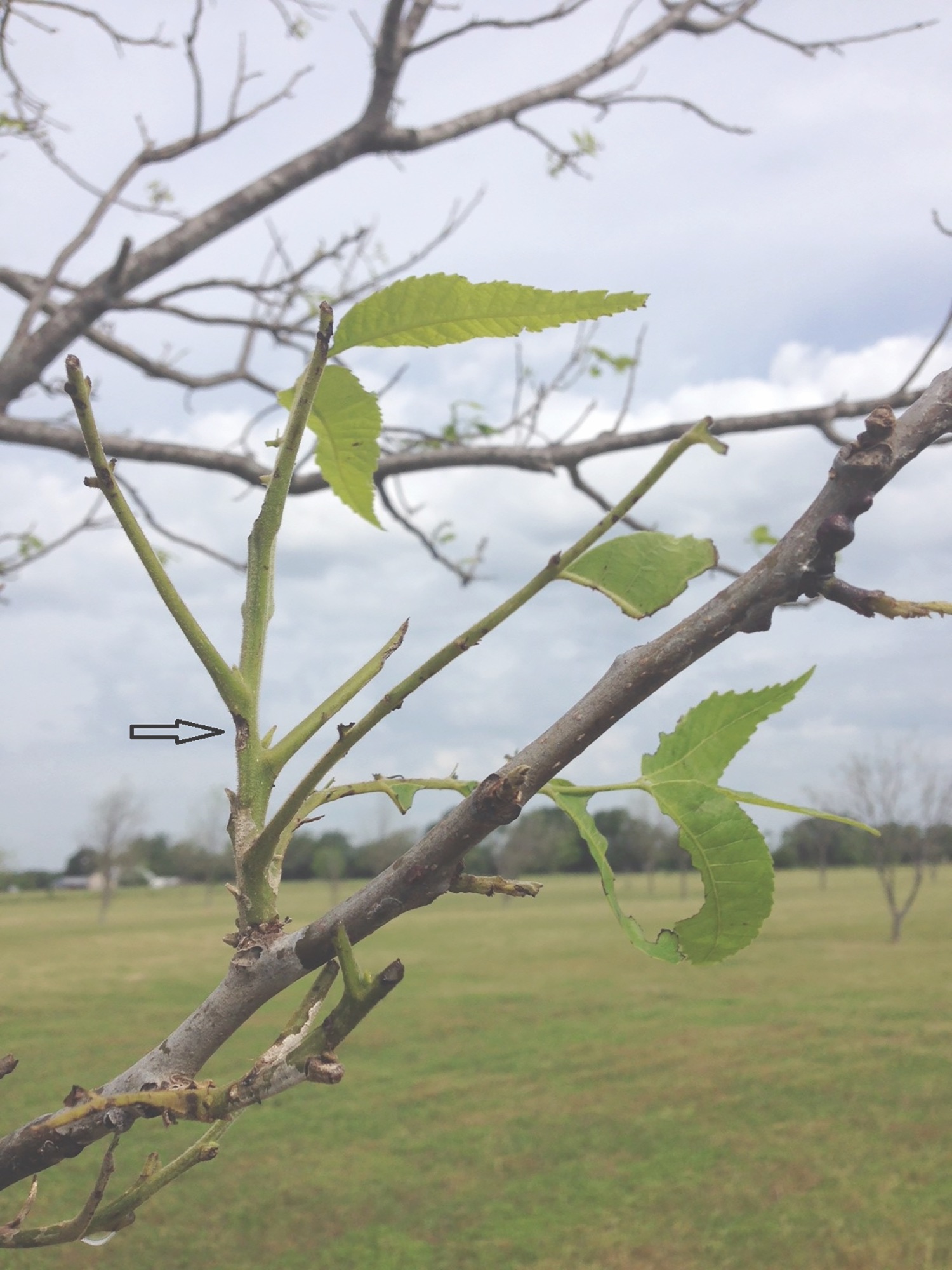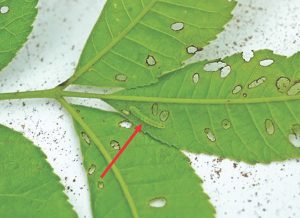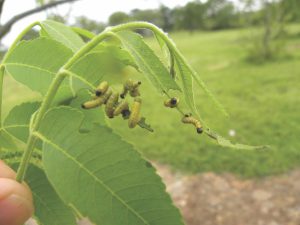Early Season Foliage Damage Could be Sawfly, June Beetles

One indication of June beetle damage is feeding on the leaf rachis, as pictured here at site of the arrow. (Photo by Bill Ree)
Sawfly
There are 2 species of sawfly which feed on pecan leaves: Periclista marginicollis, which feeds on the underside of leaflets, and Megaxyela major, which consume entire leaflets and both of these are active during the early spring. The larvae of both species resemble caterpillars (Lepidoptera) but they are actually larvae of a wasp (Hymenoptera). Fortunately, there is only 1 generation per year so when larvae are finished feeding they fall to the orchard floor, burrow into the soil and will reappear next spring as adult wasps to start the cycle again.

This picture depicts Periclista larva damage. A larva can be seen crawling along the edge of the middle leaf. (Photo by Bill Ree)
In most cases, treatments are not needed for these insects. Damage is restricted only to the early season growth, which can look worse than it really is. Another reason I hesitate to recommend a treatment is that these early season larvae are good food sources for predatory insects that are starting to colonize the canopy. I have observed wheel bug nymphs and predatory stink bugs feeding on these sawfly larvae. However, I have seen cases where foliage damage was significant and treatments were required. Unfortunately, there is no cut-and-dried threshold to go to for making a treatment decision for this group.
June Beetles
Another frustrating group of early season foliage feeders is the June beetles. There are several species of these insects, Phyllophaga sp., sometimes called June bugs or May beetles that feed on pecan foliage. Adults move to pecan foliage after dusk so during the day foliage damage may be observed but no sign of the damaging culprit is apparent. To check for this pest, you will need to observe foliage after dusk. One indication of June beetle damage, in addition to foliage loss, is feeding on the leaf rachis (what the individual leaflets are attached to). Sometimes you may find notches (where adult beetles have taken a bite) on the rachis that has turned black.
A few indicators I use to make the determination if the damage is from June bugs are: 1) there is damage but the culprit is nowhere to be found; 2) patches of foliage remaining in the canopy; 3) damage is more severe on young trees although larger trees can have some of the same symptoms; 4) damage goes above any grazing height for deer or livestock and 5) I often find feeding damage on the new stem or petiole where it looks like the adult beetle took a few bites, as indicated by the arrow in the pictures. To determine the extent of the activity you will have to check the orchard after dark.
I see this as more of a problem on young trees and if there is significant foliage loss then a broad spectrum insecticide needs to be applied. Here again, we do not have a treatment threshold and a treatment decision will have to be made based on the producer’s judgment. Another possible management tool for the home situation or backyard orchard would be to place a light source over a tub of soapy water to draw adults away from the trees that need to be protected.
If management is needed, then a broad spectrum insecticide will be required and, if possible, it should be applied late in the afternoon or evening. If livestock is in the orchard, then attention to grazing restrictions will be required.


